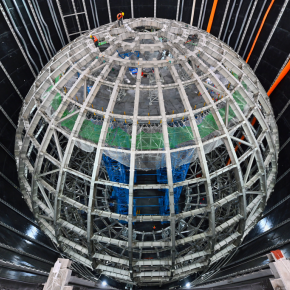JUNO : a giant to listen to the discrete waltz of neutrinos
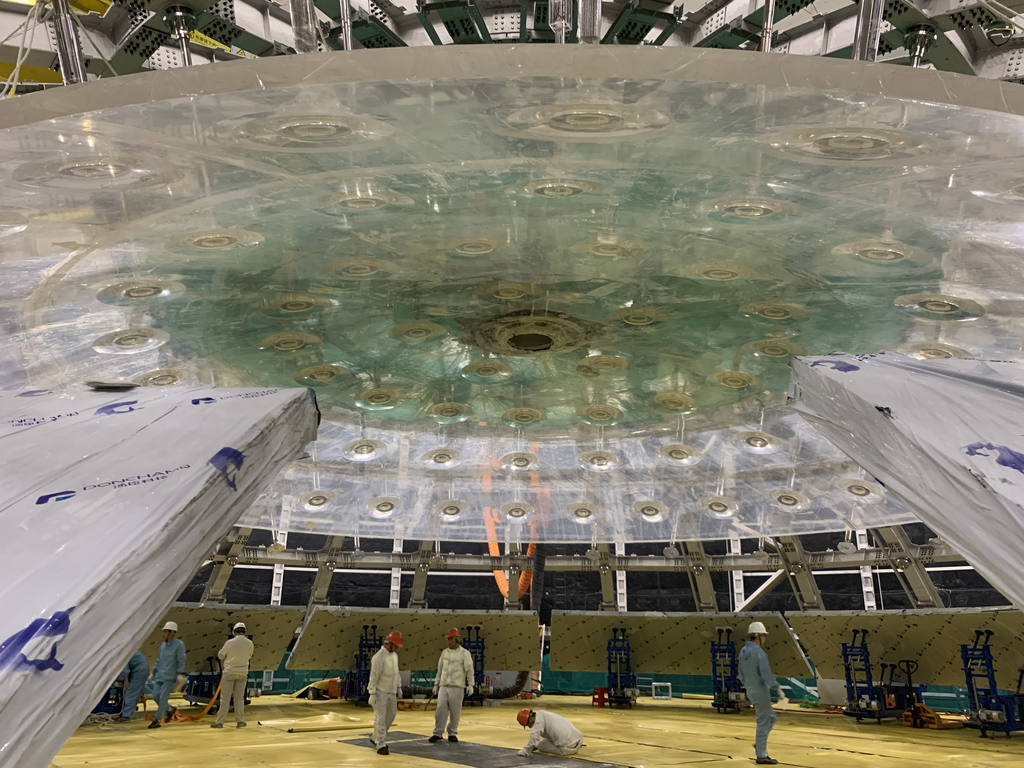
The gigantic JUNO detector, currently under construction in China with the participation of IN2P3, will soon be bugging the elusive and mysterious elementary particles that are neutrinos. Its objective: to penetrate the secrets of the discrete waltz interpreted by these ghostly grains of matter, which scientists call oscillations and which so intrigue them. With a year to go before the start of the experiment, we take a look at the images from 700 m underground in the heart of the giant under construction.
The essential is invisible
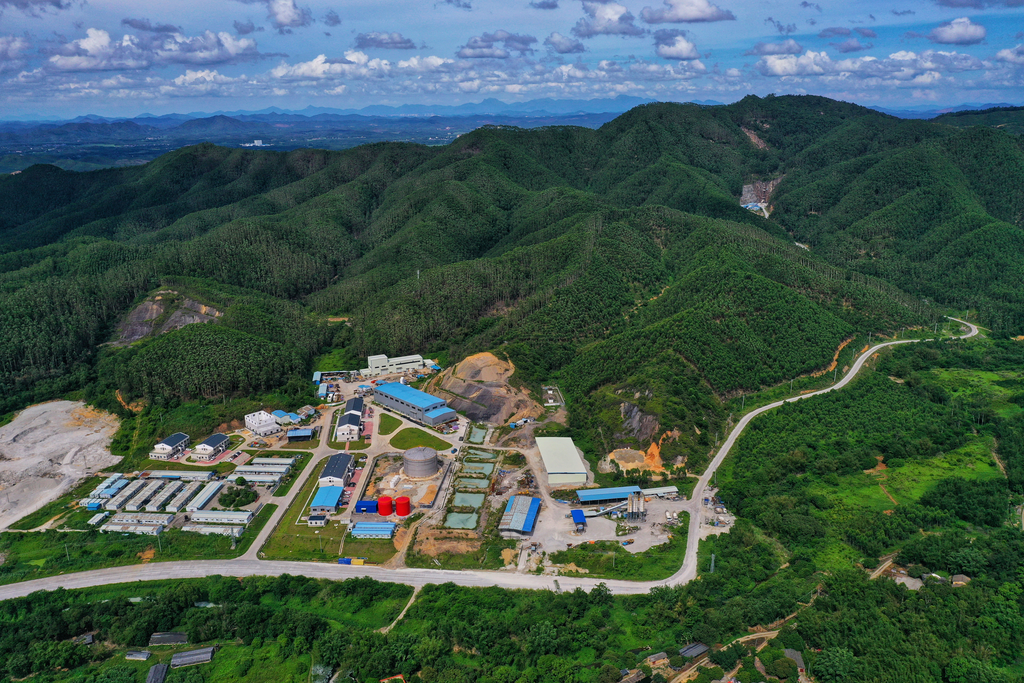
The international neutrino experiment JUNO (Jiangmen Underground Neutrino Observatory) is located in the middle of the wooded hills of Jiangmen, in southern China. It is run by an international collaboration of 15 countries involving 5 IN2P3 laboratories (CPPM, IPHC, LP2IB, Subatech and IJCLab) and aims to study with unprecedented precision the behaviour of neutrinos, ghostly elementary particles that scientists have been trying to identify for over 60 years. Don't be fooled by the image, these large infrastructures visible in the mountains are only the tip of the iceberg. In fact, JUNO is an underground experiment located 700m below the site that can be seen in the mountains at the end of the road.
Somewhere in south of China
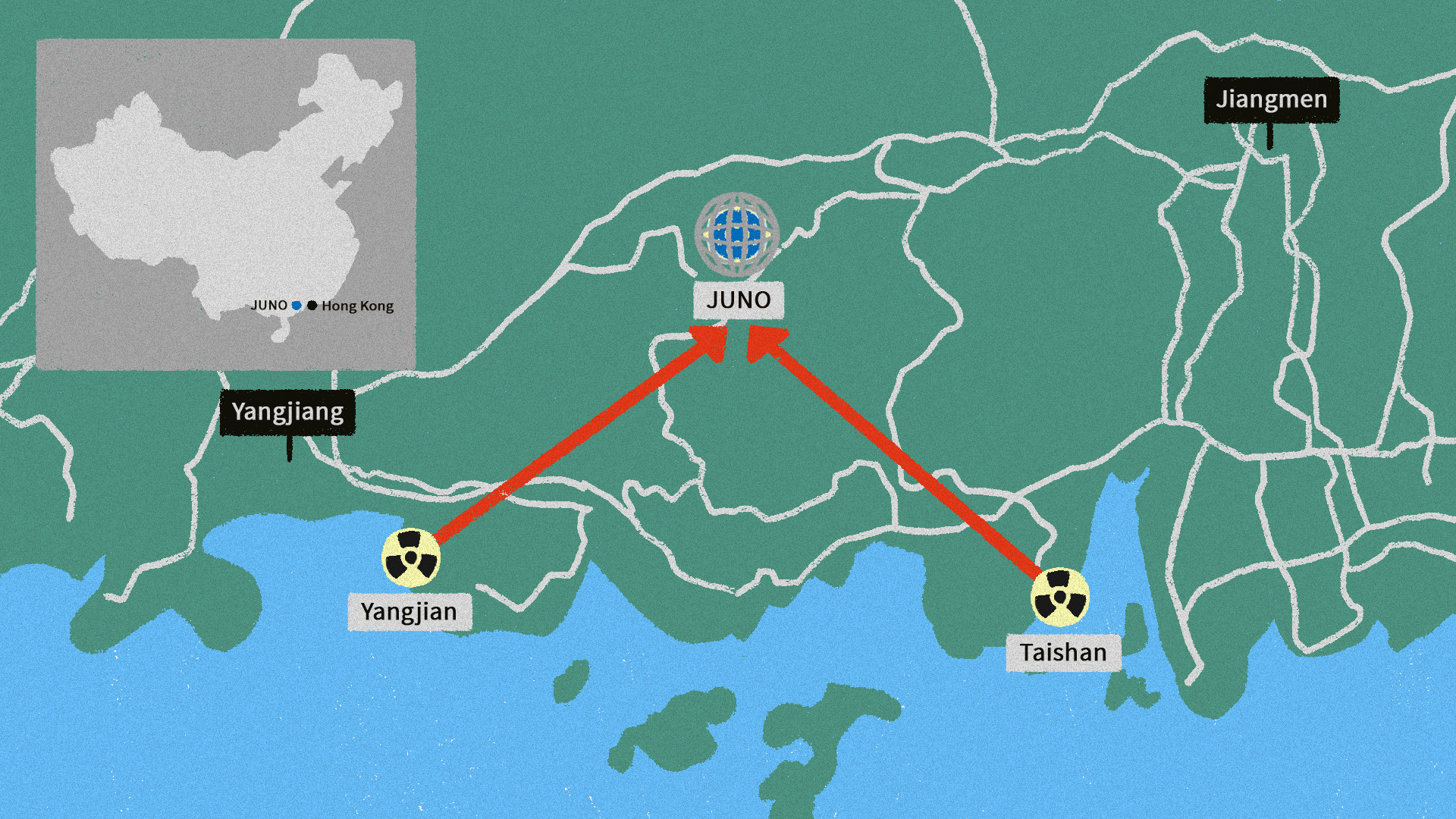
The observatory is not nestled among the mountains by chance. In order to take advantage of the maximum neutrino flux, JUNO was built right between two powerful nuclear power plants. The nuclear reactions in the reactor cores are indeed abundant sources of neutrinos, and the more neutrinos there are, the more accurate the measurements will be. Moreover, JUNO was placed precisely 53 km from each of the two power plants to ensure that a very specific phenomenon of these particles, the oscillation, would manifest itself as intensely as possible.
Let's dance !
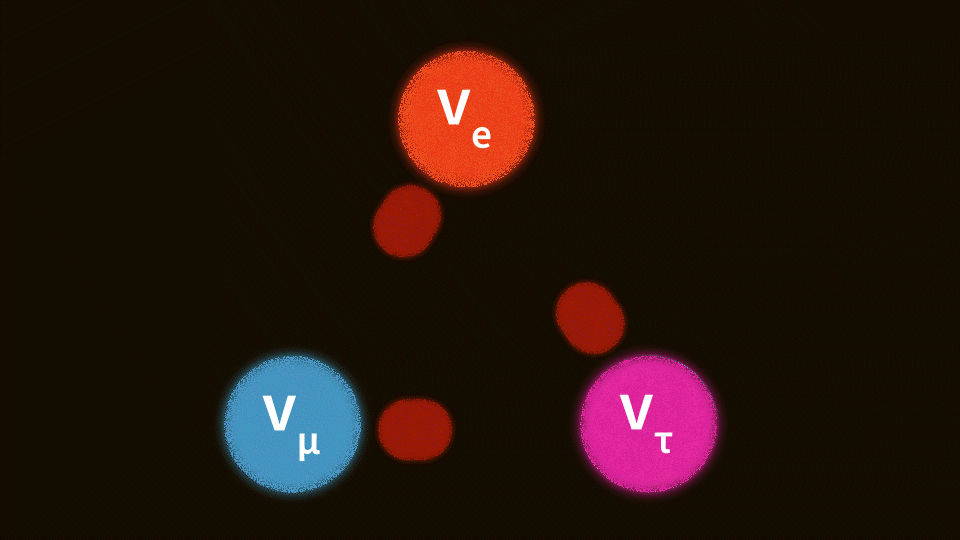
Neutrinos are mischievous particles. Not only are they virtually elusive, but they also dance a continuous three-beat waltz in which they are constantly changing. Each of these beats represents a variety of neutrino (electronic, muonic and tauic) and during their journey these particles can change variety according to rules that are still partly mysterious: this is the oscillation of neutrinos. In the secrets of this waltz lies precious information about the great ballroom that is the Universe, which physicists scrutinise like spectators with meticulous attention.
Let-us guide you
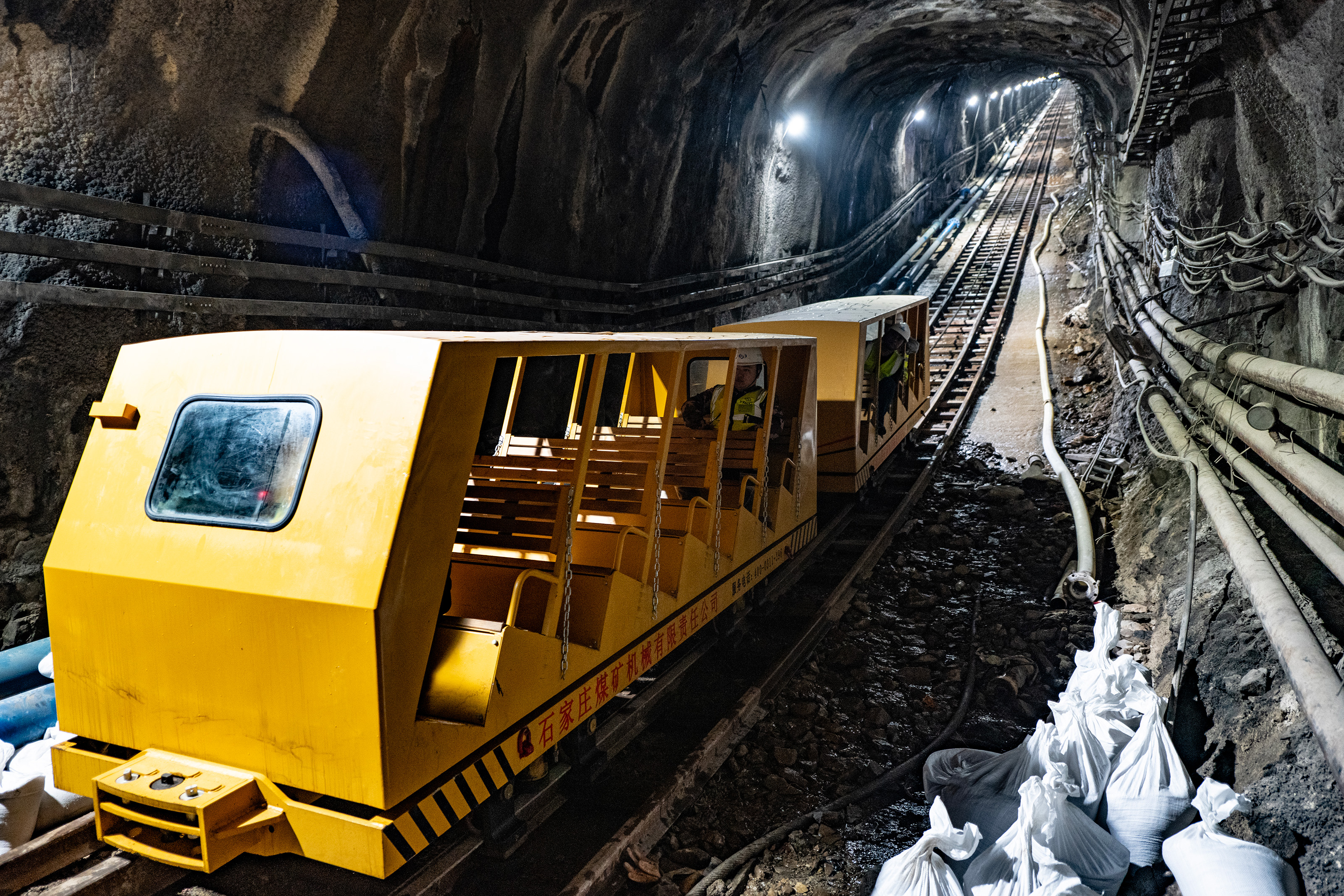
A special funicular along a gallery worthy of a cathedral nave leads down a kilometre and a half to the cavern that houses the detector. And with good reason: to observe the little waltz of the neutrinos, it is necessary to isolate oneself as much as possible from the agitation caused by the rays from the sky. The best way to do this is to bury yourself deep under a huge mass of rock that will act as a natural shield. It is there, in the 'calm' of the depths of the Earth, that it becomes possible to observe the waltz of the most elusive particles in our Universe.
The biggest dancefloor in the world
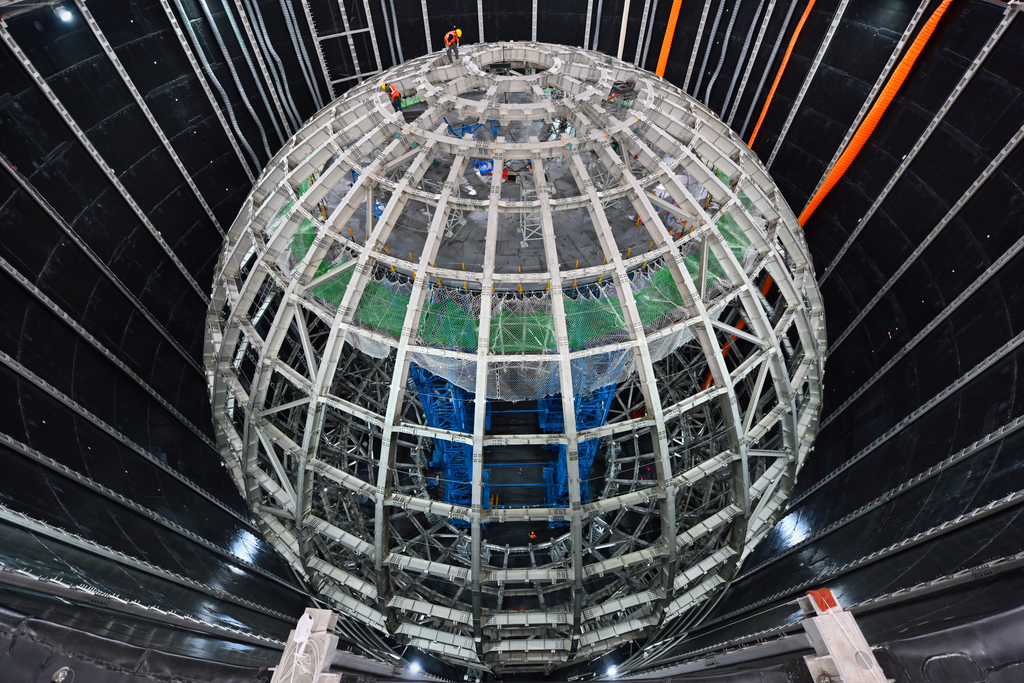
At the end of the tunnel is a chasm 44 metres deep and 43.5 metres in diameter, into which the giant metal sphere of the JUNO detector being assembled is just inserted. The tiny orange spot of a technician in the centre of the metal structure gives an idea of the scale of the experiment.
Passage to the cloakroom

JUNO is designed like an onion, in concentric layers. The outer metal sphere serves as a support for the detector instrumentation. This instrumentation will itself rest on a second transparent sphere, which will be the seat of the neutrino detection.
Under the spotlight of physics
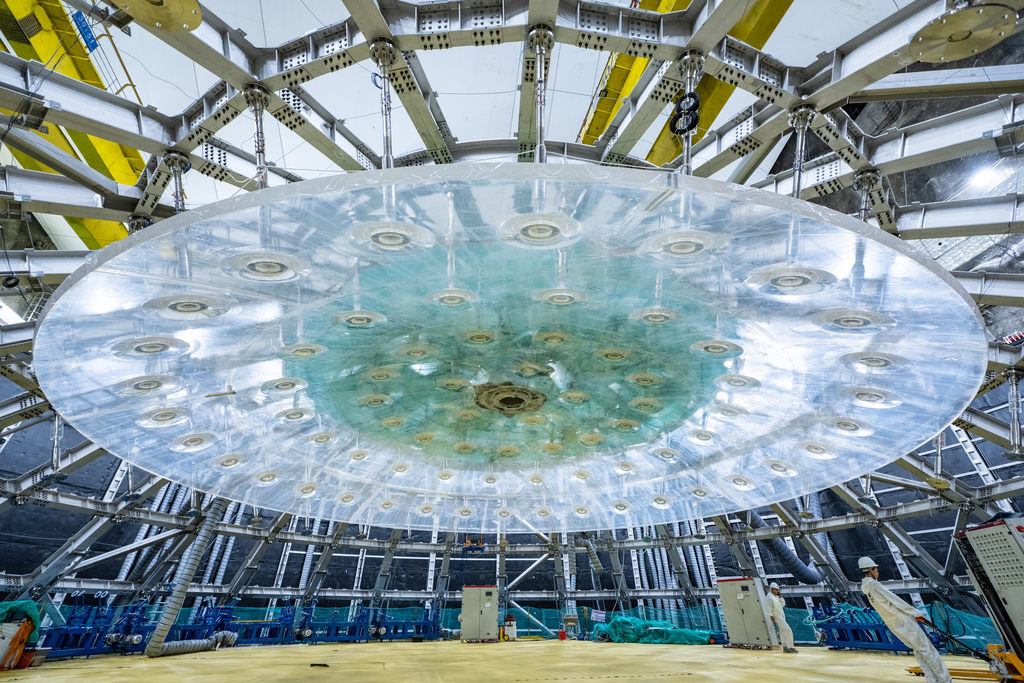
The second sphere, shown here with its top inside the metal structure, will be 35.4m in diameter. It is made of acrylic glass and, when completed, will be filled with 20 000 tonnes of glittering liquid, a kind of oil enriched with fluor and specially dosed to emit a flash of light as soon as a neutrino agrees to react in it. The oil and acrylic glass assembly allows the flash of light to propagate to the light detectors that will be placed around it..
A large ballroom
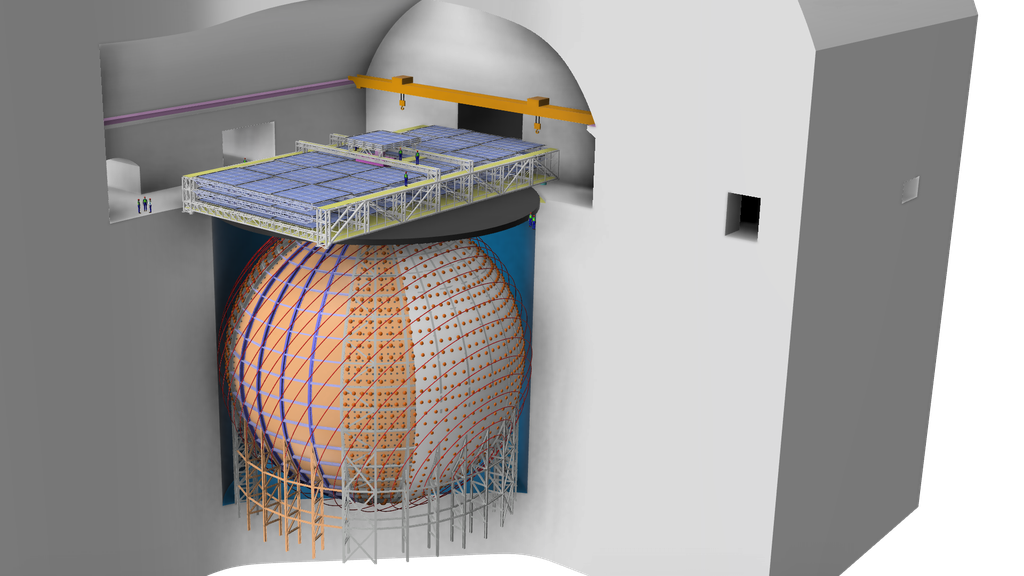
Neutrinos are particles that know how to be discreet; about 400,000 billion of these particles from the Sun pass through us every second without us noticing! In the same way, they pass through our planet without any greater difficulty and to be sure of detecting a solitary neutrino, we would have to put up a wall of lead... one light year thick! But JUNO will be interested above all in the 500 million billion neutrinos per second coming from the two nuclear power stations at Yangjian and Taishan.
Flashdance
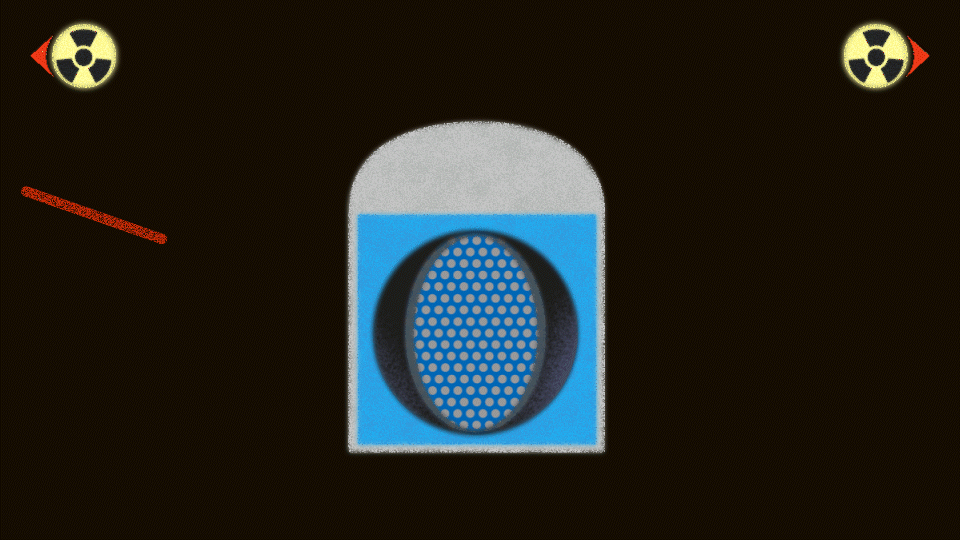
The scintillating liquid in the detector does not increase the "interception" rate of neutrinos. However, very rarely, one of them may interact with the proton of an atom in the scintillating liquid. When this happens, a weak light signal is emitted. The expected number of such interactions is expected to be between 40 and 60 interactions per day only compared to the millions of billions of neutrinos that pass by every second from the power plants alone!
In full transparency
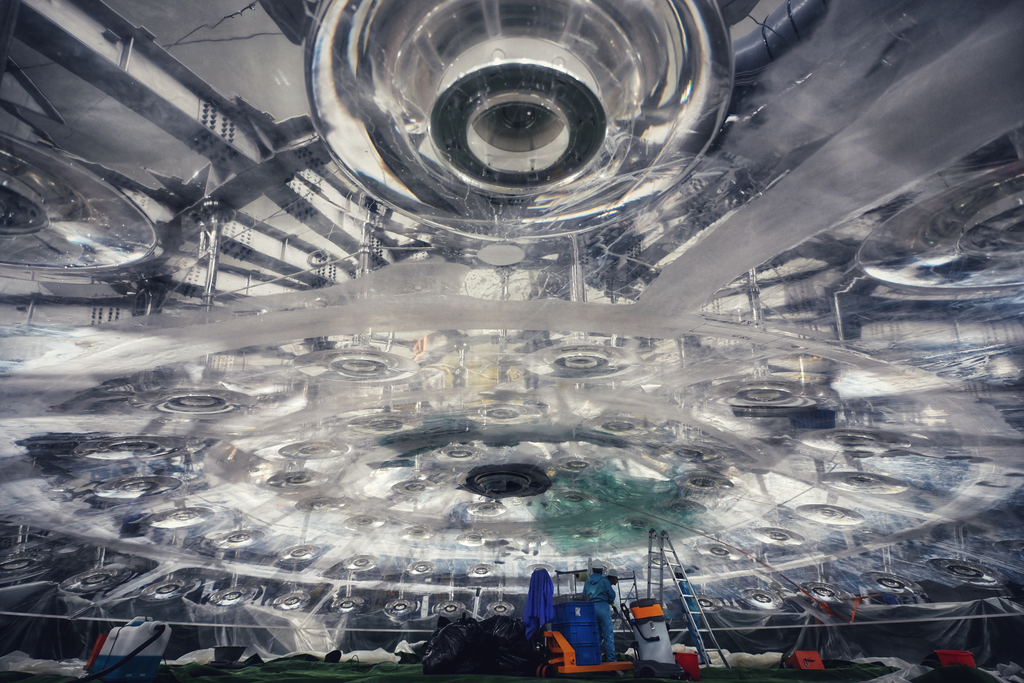
The secret of JUNO's smooth running depends on the great transparency of the central elements, starting with the glittering liquid, which has been specially designed to be as translucent as possible. The sphere, itself made of a transparent material, acrylic glass, allows a clear view of the metal structure that holds it in place. The rare light emissions that occur each day will propagate through the liquid before reaching the edges of the sphere. There, the photons will be captured by tens of thousands of special devices surrounding the sphere: photomultipliers.
The limelight
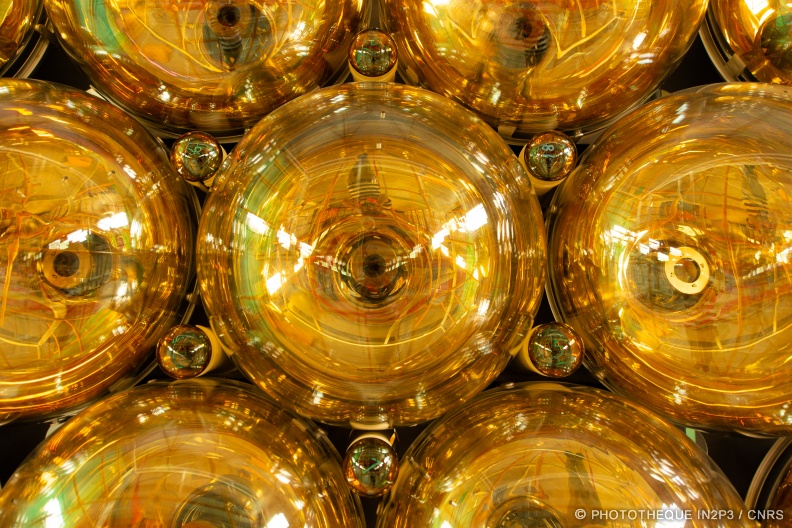
Make no mistake, these globes are not light bulbs but photomultipliers. In other words, they are the eyes of JUNO. With every passing photon, these devices convert the light into electrical signals that the scientists can analyse in their computers. To maximise the chances of catching the rare photons that come from the reactions, the transparent sphere will be covered with 42 000 of these devices.
Proper dress required...
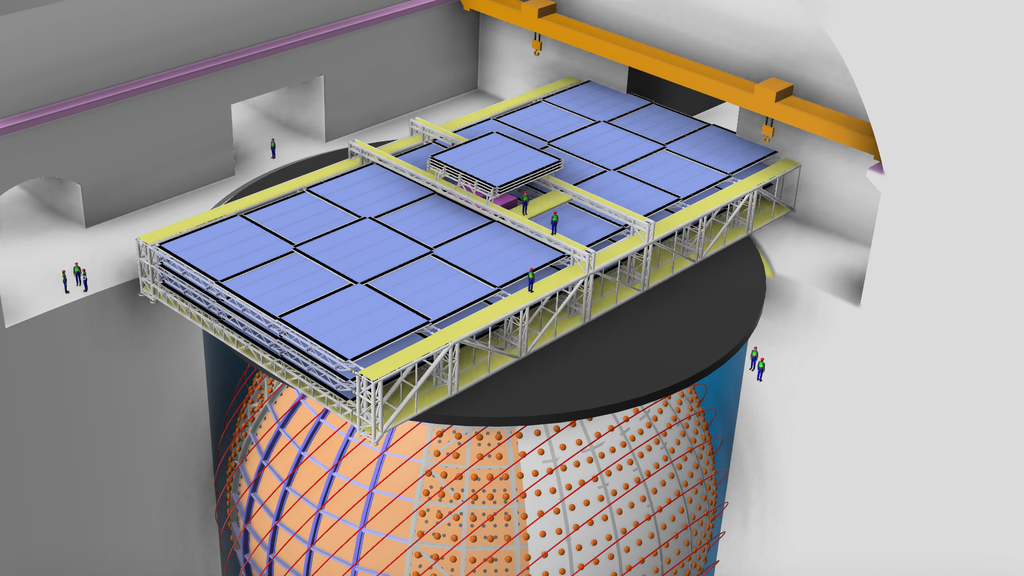
Unfortunately, it is not only neutrinos that travel deep underground. Despite the 700 metres of rock above JUNO, highly energetic particles capable of penetrating deep into the ground and mimicking the signature of a neutrino can interact with the glittering liquid. This is why the acrylic glass sphere is immersed in a large pool of purified water, equipped with 2 000 photomultipliers and topped with a series of trajectographs. In a way, this device will fulfil the same role as a noise reducer in headphones. It will specifically identify parasitic particles so that physicists can ignore their signal in the tank of glittering liquid.
The thousand-beat waltz
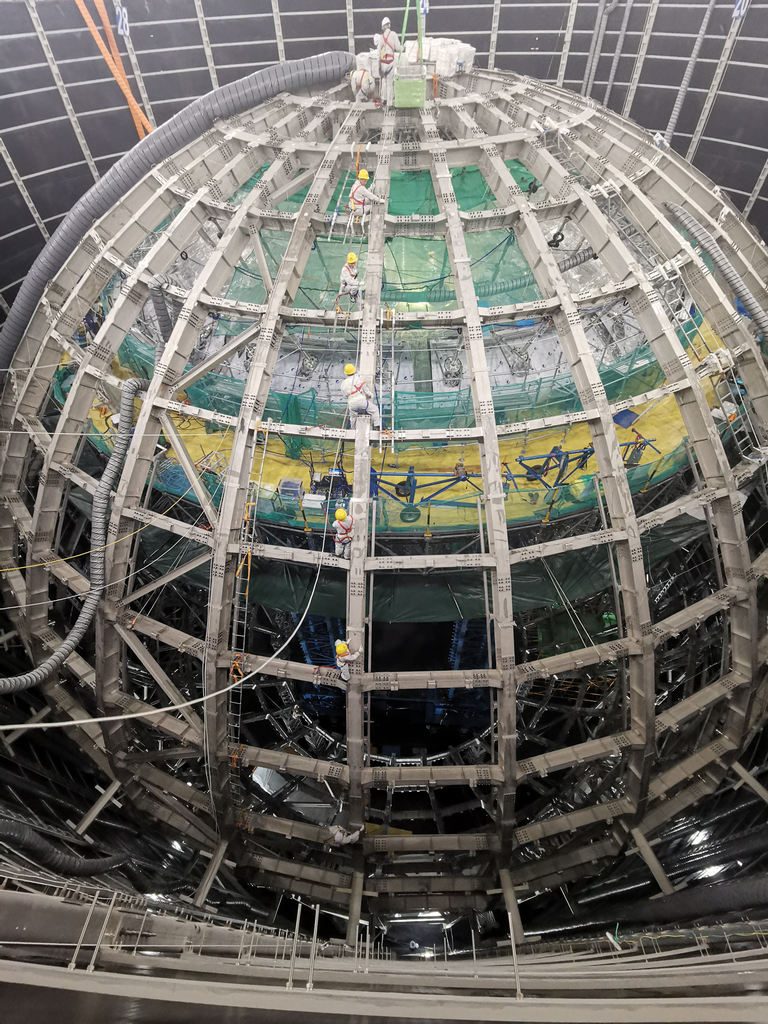
In addition to observing neutrinos emanating from power stations, JUNO will take a few detours to other places. It will lend its 42 000 'eyes' to the observation of various phenomena, such as the generation of geoneutrinos within the Earth's crust due to the radioactivity of the rocks, which will allow us to learn more about the proportion of radioactive elements in the Earth's crust. He will also observe a much more rock'n roll dance: that of neutrinos emanating from supernovae. These explosions, which are among the most violent in our Universe, generate bursts of neutrinos, the study of which will reveal more about the explosive mechanisms at work. A detector like JUNO is designed to take data for about 50 years. At the heart of JUNO, the neutrinos are not done waltzing around...
